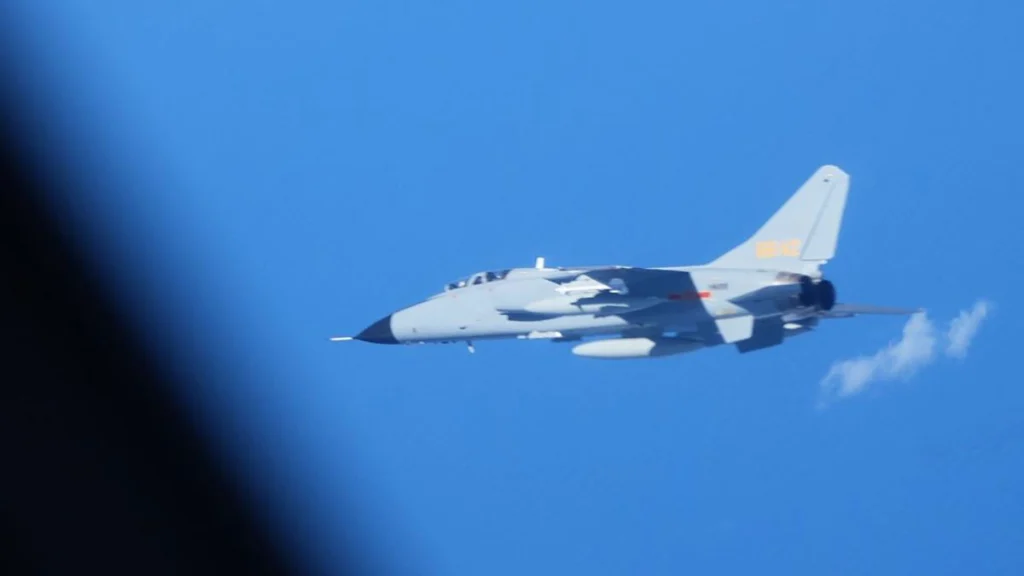Japan urges China to stop flying fighter jets too close to Japanese military aircraft

Japan has urged China to stop flying its fighter jets too close to Japanese military aircraft, following recent encounters in international airspace. This request has sparked concerns about the growing military tensions between the two nations. The issue could lead to an unintended military confrontation unless both sides take preventive actions. Japan’s call comes after an incident in which Chinese jets reportedly came dangerously close to Japanese planes, forcing the crew to take evasive action.
The Incident That Sparked the Call
A recent encounter involved a Japanese Self-Defense Forces (SDF) aircraft and Chinese fighter jets. Japan claims the Chinese aircraft flew too close, prompting the Japanese crew to maneuver to avoid a collision. While no physical contact occurred, Japan’s Ministry of Defense condemned the actions. They stressed the importance of maintaining international safety standards in the air. This incident is not the first of its kind. Japanese military aircraft have repeatedly reported close encounters with Chinese planes in the past.
The Japanese Ministry of Defense issued a statement urging China to respect international airspace and avoid aggressive maneuvers. They expressed concern that such actions could escalate into a broader military conflict. Japan’s request emphasizes the need for communication and mutual respect in the region’s airspace.
China’s Allegations Against Japan
In response, China has accused Japan of similar provocative actions. Beijing claims Japan’s military planes often approach Chinese aircraft in an effort to spy on China’s military activities. Chinese officials argue that Japan conducts reconnaissance missions near its borders, particularly over the East China Sea. They view these actions as a threat to China’s national security.
China also alleges that Japan’s planes often hover around areas where China conducts military exercises. They demand that Japan stop these operations. The accusations stem from the ongoing territorial disputes between the two nations, particularly over the Senkaku Islands (known as Diaoyu Islands in China). Both Japan and China claim sovereignty over these islands, which lie in the East China Sea. These islands hold strategic importance and are rich in natural resources like oil and gas.
Japan’s Strategic Concerns
Japan’s concern over China’s growing military presence extends beyond these close encounters. Japan has increasingly voiced its unease over China’s expanding military capabilities. China’s rise as a military power has prompted Japan to rethink its defense strategies. Japan has long relied on the United States for defense under the U.S.-Japan Security Treaty. However, Japan is now modernizing its military forces to counter China’s growing influence in the region.
In recent years, Japan has strengthened its defense partnerships with other countries, including the United States, Australia, and India. They have participated in joint military exercises to counterbalance China’s increasing assertiveness. Japan’s military doctrine, which was once primarily defensive, is now evolving to meet regional security challenges. The close encounters with Chinese jets remind Japan of the growing risks it faces in maintaining regional stability.
Diplomatic Tensions and Calls for Dialogue
Despite the rising tensions, both Japan and China have expressed a willingness to seek diplomatic solutions. Japan has urged China to engage in dialogue to address these concerns and reduce the risk of accidental military clashes. Japan’s Foreign Minister, Toshimitsu Motegi, stressed the importance of communication to ensure regional stability. Both countries have agreed on the need for better transparency and adherence to international norms. However, both sides continue to blame each other for the rising tensions.
China insists its military activities in the region are legitimate and necessary for its national security. Chinese officials have criticized Japan’s military cooperation with the United States, viewing it as a threat to their growing influence in the Asia-Pacific region. Despite these disagreements, both countries understand the importance of multilateral forums like APEC and the Shanghai Cooperation Organization (SCO) in managing regional tensions. Yet, the lack of direct communication between their military forces remains a significant barrier.
The Broader Geopolitical Context
The growing military tensions between Japan and China are part of a larger power struggle in the Asia-Pacific region. China’s increased military assertiveness and Japan’s response have become central to the region’s security landscape. Japan faces a delicate situation as it balances its need for defense with the desire to maintain peace in the region. The United States continues to play a key role in the balance of power, with its military presence in the region acting as a counterbalance to China’s rise.
As tensions between Japan and China grow, the risk of an accidental confrontation increases. The ongoing territorial disputes in the East China Sea only heighten the stakes. Any misstep by either side could lead to a wider conflict. Japan’s call for China to stop flying too close to its military planes is a reminder of the growing risks in the region.
Conclusion
Japan’s call for China to cease flying fighter jets near Japanese military aircraft highlights the growing concerns about regional stability. While both nations have blamed each other for provocations, the need for diplomatic dialogue remains essential. The East China Sea dispute, coupled with China’s expanding military influence, continues to shape the security landscape of the Asia-Pacific. Japan’s request underscores the need for greater transparency, respect for international airspace, and communication between the two countries. Only through cooperation can both nations avoid the dangers of an accidental military conflict.






